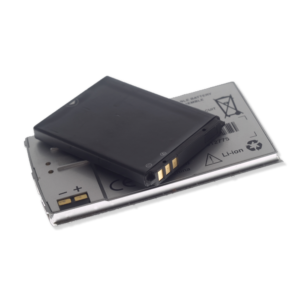
Thinking About Lithium Batteries as a Passenger
Recently in my travels, I found myself stuck in a long security line at our local airport. Being that it was during Spring Break, there was a wide variety of travelers from college students to retirees looking to re-connect with family. Although there were people of all ages and travel experience they all seemed to have one thing in common, they were confused how to travel with their laptop computers and other types of portable electronics containing lithium batteries. Let’s discuss some general guidance on how to travel with specific portable electronics that contain lithium batteries referencing some recently issued documents by IATA.
Portable Electronic Devices (PED) Containing Batteries

Portable Electronic Devices including electronics such as cameras, mobile phones, laptops, and tablets containing batteries carried by passengers for personal use should be carried in carry-on baggage.
For devices that can be packed in checked baggage:
- The device must be protected from damage and to prevent unintentional activation;
- The device must be completely turned off (not in sleep or hibernation mode).
Spare lithium batteries
 Each spare battery must be individually protected to prevent short circuits by placing them in the original retail packaging or by otherwise insulating terminals by taping over exposed terminals or simply placing each battery in a separate plastic bag or protective pouch and carried in carry-on baggage only. Items that contain lithium cells or batteries where the primary purpose of which is to provide power to another device, for example power banks, are considered as spare batteries and are restricted to carry-on baggage only.
Each spare battery must be individually protected to prevent short circuits by placing them in the original retail packaging or by otherwise insulating terminals by taping over exposed terminals or simply placing each battery in a separate plastic bag or protective pouch and carried in carry-on baggage only. Items that contain lithium cells or batteries where the primary purpose of which is to provide power to another device, for example power banks, are considered as spare batteries and are restricted to carry-on baggage only.
Batteries must be of a type that meets the requirements of the UN Manual of Tests and Criteria, Part III, subsection 38.3.
Electronic Cigarettes Containing Batteries – “e-cigarettes”

As seen on the video from my previous blog on lithium battery safety tips we know electronic cigarettes, also known as e-cigarettes, can also pose a potential danger aboard an airplane. E-Cigarettes, including other personal vaporizers containing batteries when carried by passengers for personal use must be in carry-on baggage only. Recharging of these devices and/or batteries on board the aircraft is not permitted and the passenger must take measures to prevent accidental activation.
Baggage with Integrated Lithium Batteries – “smart luggage”

Not too long ago I wrote a blog about some of the restrictions when using “smart luggage”. Since that time, IATA has established further guidelines if you are traveling with smart luggage.
“Smart” luggage include features such as:
- Lithium ion battery and motor allowing it to be used as a personal transportation device.
- Lithium ion battery power bank that allows charging of other electronic devices.
- GPS tracking devices with or without GSM capability.
- Bluetooth, RFID and Wi-Fi capability.
They are subject to the following limitations below.
Baggage equipped with a lithium battery, other than lithium button cells:
- If the baggage is to be checked in, the lithium battery must be removed from the baggage and the lithium battery must be carried in the cabin; or
- The baggage must be carried in the cabin.
- Baggage where the lithium battery is designed to charge other devices and cannot be removed is forbidden for carriage.
http://www.iata.org/whatwedo/cargo/dgr/Documents/passenger-lithium-battery.pdf
In Addition, use the below table provided by IATA to determine if your PED, PMED, or Spare Battery can be carried on the flight. And as always please feel free to contact ICC Compliance Center for your regulatory needs.
Wh rating or lithium metal contentConfigurationCarry-on baggageChecked baggageOperator approval
| ≤ 100 Wh / 2g | In equipment (PMED) | Yes (max 15 PMED1) | Yes | No1 |
|---|---|---|---|---|
| Spare battery(ies) | Yes (max 20 spare batteries2) | No | No2</sup | |
| > 100 to ≤ 160 Wh | In equipment (PMED) | Yes | Yes | Yes |
| Spare battery(ies) | Yes (max 2 spare batteries) | No | Yes | |
| > 160 Wh | Must be prepared and carried as cargo in accordance with IATA Dangerous Goods Regulations | |||
| > 2g ≤ 8g | In equipment (PMED) | Yes | Yes | Yes |
| Spare batteries for PMED | Yes (max 2 spare batteries) | No | Yes | |
- Each person is limited to a maximum of 15 PED. The operator may approve the carriage of more than 15 PED.
- Each person is limited to a maximum of 20 spare batteries of any type. The operator may approve the carriage of more than 20 batteries.





